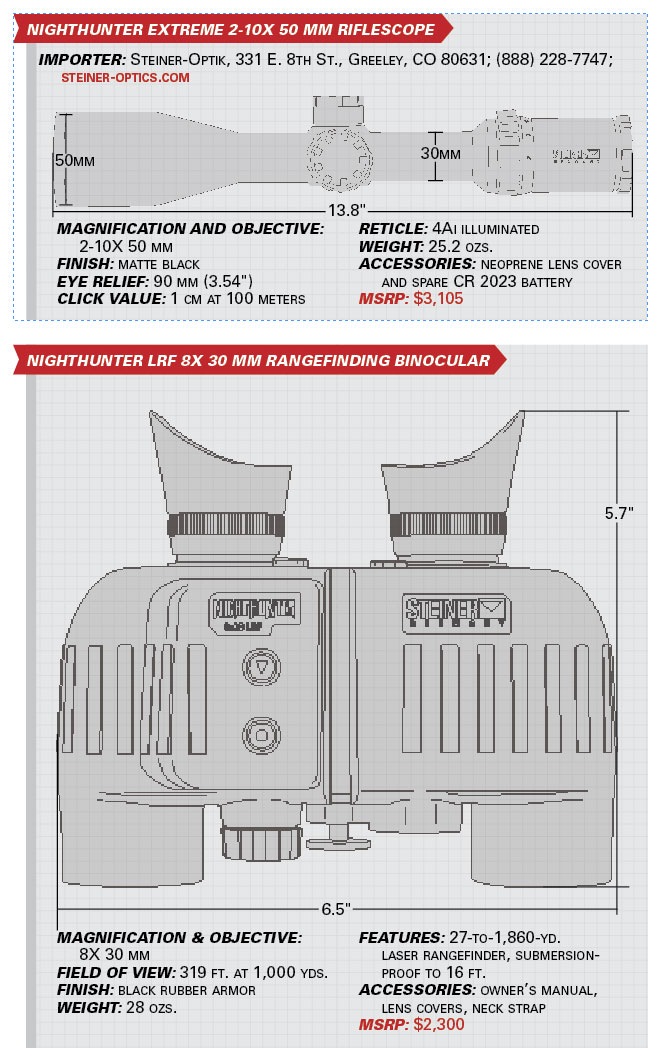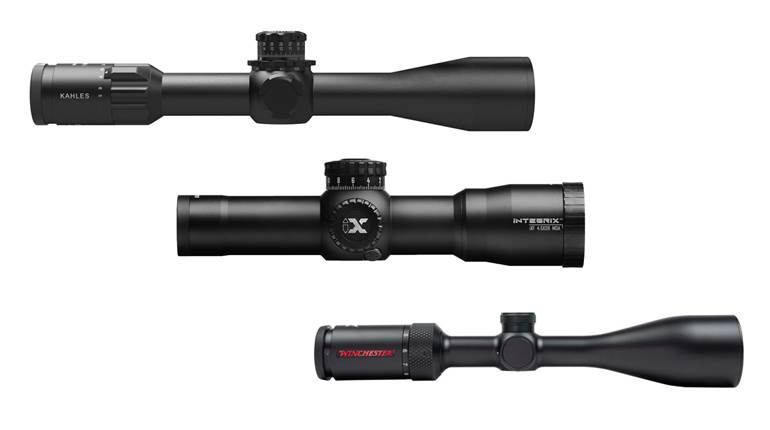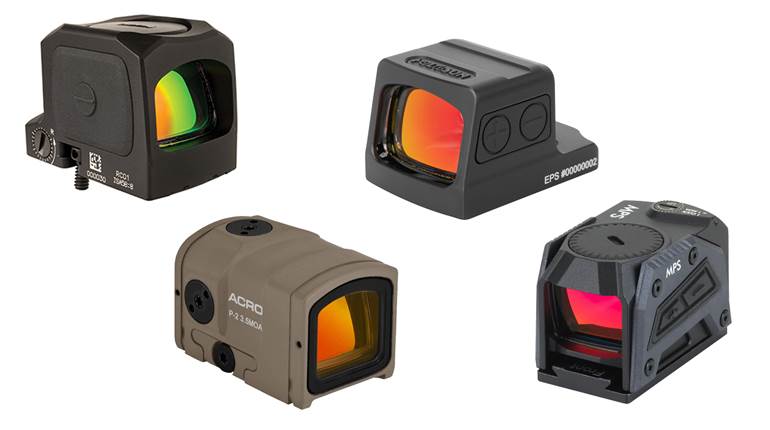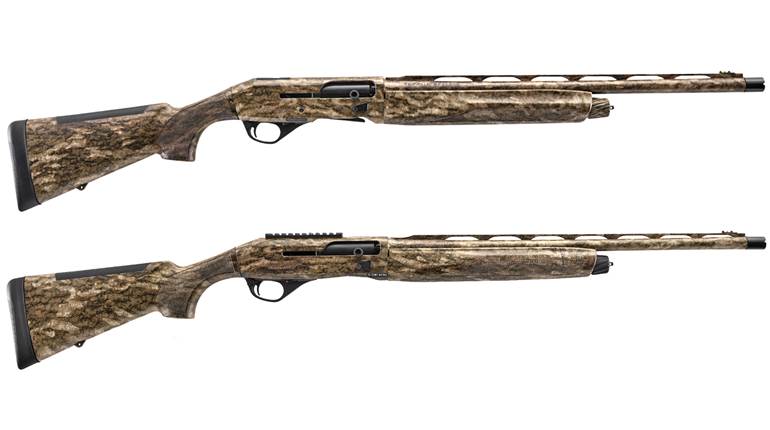

Perhaps the widest variety of German hunting and shooting optics, however, is offered by a relatively new company. Karl Steiner started his one-man shop in 1947 in the mid-size city of Bayreuth, and within six years employed 50 people, despite the country’s poor post-war economy. Since then, Steiner-Optik has grown considerably, and in 2008 it was acquired by Beretta’s U.S.-based Burris division, initiating a considerable expansion in the Steiner product lineup.
Unlike many other optics companies in the worldwide economy, Steiner still grinds, polishes and coats lenses in its German factory. Its earliest major triumph, however, didn’t involve lenses as much as binocular structure. Twenty years after the company’s founding, Steiner developed binocular bodies made of polycarbonate for the German Bundeswehr, the country’s military organization. Until then, binocular bodies had been made from metal, as many still are, but “Makrolon” bodies could be manufactured more easily and were lighter and tougher.
In 1973, Steiner followed with the first nitrogen-filled binoculars, to prevent interior fogging. Partly due to both innovations, in 1988 the U.S. Army placed the largest order ever for military binoculars, and of the 72,000 Steiner products delivered, only four were rejected. This basic 8X 30 mm is available today on the civilian market for around $700, partly because it’s one of the relatively few Porro-prism models.
Porro-prism binoculars have angled, “dogleg” barrels to accommodate the shape of their prisms. Until the late 1980s, they were often favored instead of roof-prism models because the latter didn’t provide quite as sharp an image. But a new glass coating cured the “phase shift” of light rays that plagued the roof-prism design and, along with their more compact size and the relative ease with which they could be sealed against moisture, roof-prism binoculars started taking over the market. Even the best roof prisms, though, are not optically superior to the best Porro prisms. So Porro-prism binoculars can be a really good deal since they typically cost less. The Steiner Military/Marine 8X 30 mm is a perfect example.
My “test comparison” glass for 8X binoculars with 30-32 mm objective lenses is a Swarovski EL 8X 32 mm roof-prism model. The Swarovski commands a premium at retail, but many serious optics users believe it has the best glass of any binocular of that size made today. When I directly compared the view through the 8X 30 mm Steiner to the Swarovski, in both bright and dim light, the only obvious optical difference was slightly more “edge fuzz” in the Steiner. The Steiner also had a slightly narrower field of view because of its greater eye relief than the Swarovski, but many binocular users prefer extra eye relief, so I called that a tie. The Steiner came close to the Swarovski in both brightness and sharpness, even in dim light, yet retails for a fraction of the price.
Another reason the Steiner costs less is the individual focus of each eyepiece, instead of the center-focus on the Swarovski. Individual focus is the least expensive way to seal a binocular against moisture, one reason Steiner could nitrogen-fill its military model. Steiner’s present nitrogen-filled system, called N2, uses pressurized nitrogen, which the company claims makes its binoculars less prone to taking on atmospheric moisture through years of use. Individual focus doesn’t allow quick refocusing at close distances, however, which is the reason bird watchers favor center-focus. For most military or hunting use, though, there’s no disadvantage—just set ’em for your eyes and leave ’em alone. When set for my eyes, everything from 30 yds. and beyond was in sharp focus.
Steiner introduced a laser rangefinder binocular very similar to its basic military model in 2009. I tested an 8X 30 mm in the local Montana mountains, because uneven and oddly angled rocks, meadows and trees don’t reliably reflect a laser beam. Steiner’s specifications list the maximum range as 1,860 yds. The longest the test binocular ranged was just a tad less than 1,700 yds., due to the next mountain being much further away. Most readings were also very quick, and the simple red circle reticle was easy to use.
Steiner was the first binocular manufacturer to introduce a water- and dust-resistant lens coating, in 2006, offering what it called NANO Protection. I’ve tested several optics with protective coatings through the years, and the Steiner version works as well as any. One basic test is to hold a binocular lens under a running faucet, then flick the binocular sideways. My first such trial of NANO Protection left one tiny droplet on the lens tested. The dust-resistance of protective coatings has always been more subjective, one reason Internet forums still argue about its value. Obviously dust still settles on coated lenses, but in my experience such coatings do seem to make lens cleaning easier, and protect the optics underneath as well.
Steiner also offers roof-prism binoculars, and I’ve been using its 10X 42 mm Predator, a popular hunting glass, for a couple of years now. Last year, the company introduced an improved model and sent one along to test. The optics are noticeably brighter and sharper than my older glass, comparing very well with other binoculars in its $400 price-range.
The next step up in hunting binoculars is the Nighthunter series. Steiner’s premium low-light glass is the Nighthunter Xtreme, a big Porro prism in the traditional European configuration of 8X magnification combined with 56 mm objective lenses for an 8 mm exit pupil, providing maximum light transmission to the dilated human pupil. But there are also several Nighthunter XP roof prisms, including an 8X 56 mm. The tested Nighthunter XP was a 10X 42 mm, very similar in size and appearance to the 10X 42 mm Predator, but optically brighter and sharper.

In normal use, the Steiner Nighthunter wasn’t as bright as a Swarovski 10X 42 mm EL—and I didn’t expect it to be, since the Swarovski retails for more than twice as much. But all Steiner binoculars feature fold-out “wings” on the rubber eyecups. When a viewer doesn’t wear glasses, the wings prevent sidelight from entering their eyes, brightening the view considerably. I’ve been wearing glasses since age 10, due to myopia that’s now in the 20/300 range, and typically use binoculars with my eyeglasses. Both the Steiner and Swarovski could be focused with my glasses removed, and with its wings spread the Steiner was just about as bright.
When I performed the same test with the 8X 30 mm Steiner military Porro prism and the Swarovski 8X 32 mm EL, the optical gap again narrowed considerably. The Steiner wings are a relatively simple feature not many companies offer, but they make a real difference. The downside is that the wings also tend to trap perspiration, though the NANO Protection alleviates the problem considerably. While Steiner’s primary focus has long been on binoculars, it began offering military and hunting riflescopes in 2011, all featuring the N2 pressurized, nitrogen-filled system. The Nighthunter Xtreme is Steiner’s top-line hunting scope, and it claims: “Proprietary lens coatings deliver the best light transmission in the industry.”
While many hunters place the highest priority on optical quality, if a scope doesn’t hold zero or adjusts erratically, the finest glass in the world is irrelevant. I mounted a 2-10X 50 mm Nighthunter on my very accurate Heym SR-21 .300 Win. Mag., partly because it seemed appropriate to mount a German scope on a German rifle, and partly because the .300 Win. Mag. recoils enough to test the mechanics of any hunting scope. In fact, firing a box or two of ammunition through the Heym has revealed mechanical deficiencies in several optics. And no, the mounts weren’t at fault, since they’re steel Talley detachables, with the bases not just screwed but glued to the receiver, using Brownells Acraglas.
All Steiner scopes, both hunting and military, have 30 mm tubes, and all the Nighthunter scopes have three-post reticles with an illuminated red dot in the center of the crosshairs. The adjustments on the 2-10X 50 mm Nighthunter are listed as one centimeter at 100 meters. Since many of today’s hunters prefer to change the elevation setting for longer shots, after adjusting the Nighthunter to dead-on at 100 yds. I ran the elevation knob up or down 15 clicks between shots, shooting until two 10-shot groups formed. The point-of-aim group measured 0.98", center to center, the top group measured 1.06", and the two groups were directly in line vertically. Fifteen 1-centimeter clicks, by the way, is enough to change point of impact from 250 yds. to 500, when shooting a typical 180-gr. hunting handload in the .300 Win. Mag.
As closely as I could measure, the group centers were 5.37" apart. At 100 meters, approximately 109 yds., this would be equivalent to 5.85". For all practical purposes, that’s the same as the 5.91" that 15, one-centimeter clicks should move the point of impact at 100 meters. The clicks were also quite firm—helpful when changing settings in the field—and I didn’t have to turn a few clicks past the desired setting, then turn them back to reduce backlash as is sometimes necessary with other scopes. The only “flaw” in the elevation adjustment is the lack of a zero-stop. For those who feel a zero-stop is essential, the turrets of the Steiner military scopes all feature a simple, effective system on their exposed turrets.
My test for optical quality uses a custom chart with 10 alternating black-and-white lines, starting 1" wide at the top of the chart and shrinking to 1/16" wide at the bottom. Since magnification has a significant effect on apparent brightness, all scopes are set on 6X for a fair comparison of overall optical quality.
The testing was done at night at 25 yds., with the scope absolutely still and focused as finely as possible. I illuminated the chart from 25 yds. with a 100-watt tungsten-filament lightbulb.

The lines are numbered, from 1 for the top 1" line to 10 at the bottom, and scopes are rated by the smallest line that can be seen. If the line can be seen very clearly, the rating gets a “+”. So far all scopes have tested between five (the 3/8" line) and eight, the 1/8" line, with six being the average for today’s multi-coated scopes. The fives have all been older scopes, made before lens coatings became common, and the eights have all been scopes costing at least $1,000, though not all $1,000 scopes test that well, partly because so many newer scopes have etched or illuminated reticles, which can slightly interfere with light transmission. The Nighthunter rated an eight, one of the handful of scopes ever testing that high.
I also brightness-tested one of the Steiner GS3 (Game Sensing) scopes, its lower-priced line, which, according to the manufacturer, “utilizes exclusive CAT (Color Adjusted Transmission) lens coatings to amplify contrast in the peak human vision sensitivity range. The optimized contrast effectively separates game from leafy or shadow-dappled backgrounds, exposing your target to a clean, accurate shot.” The scope was a 2-10X 42 mm, which rated a 7, above average, but all those tests took place during August. There wasn’t much game out and about except for pronghorns and very red, summer-coat whitetails, and neither were hard to see, but the coatings apparently emphasize reddish colors, as red and orange “popped” more in the view through the GS3 than the Nighthunter.
The GS3 series features a multi-point “Christmas tree” reticle, but instead of wider hashmarks below the center of the crosshairs, there’s a windage-hold dot on either side of a short hashmark. There wasn’t sufficient time for another full-blown range test, so instead I mounted the 2-10X GS3 on a rifle and used a collimator to test the repeatability of the adjustments, which checked out fine.
In addition to riflescopes and its very wide array of binoculars, Steiner also offers an extensive lineup of sophisticated laser sights and battle lights designed for law enforcement and military use. If the company’s riflescopes and binoculars gain as much acceptance among hunters as they deserve, perhaps Steiner will develop spotting scopes, too. I’d personally be very interested in seeing the result.





































